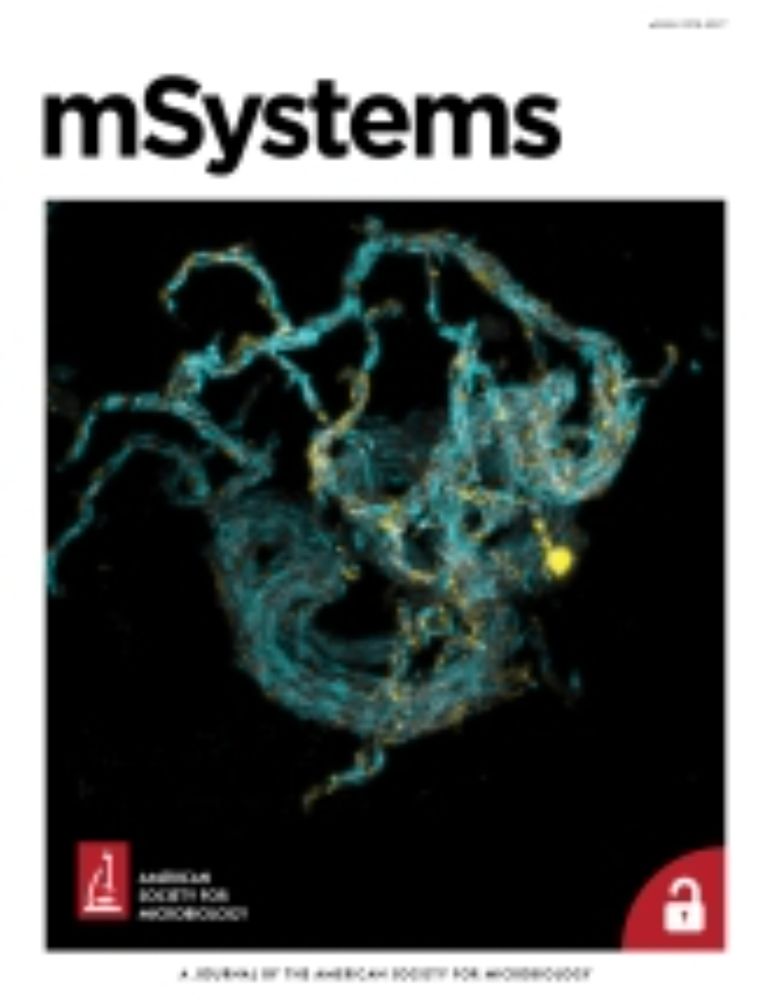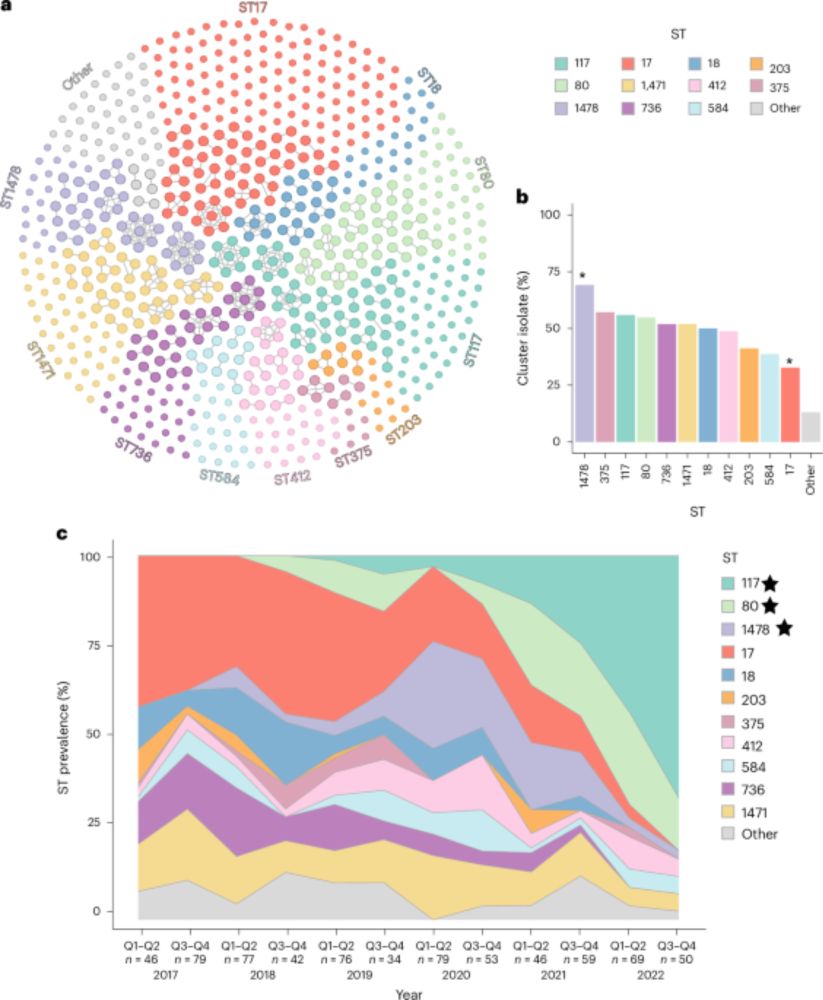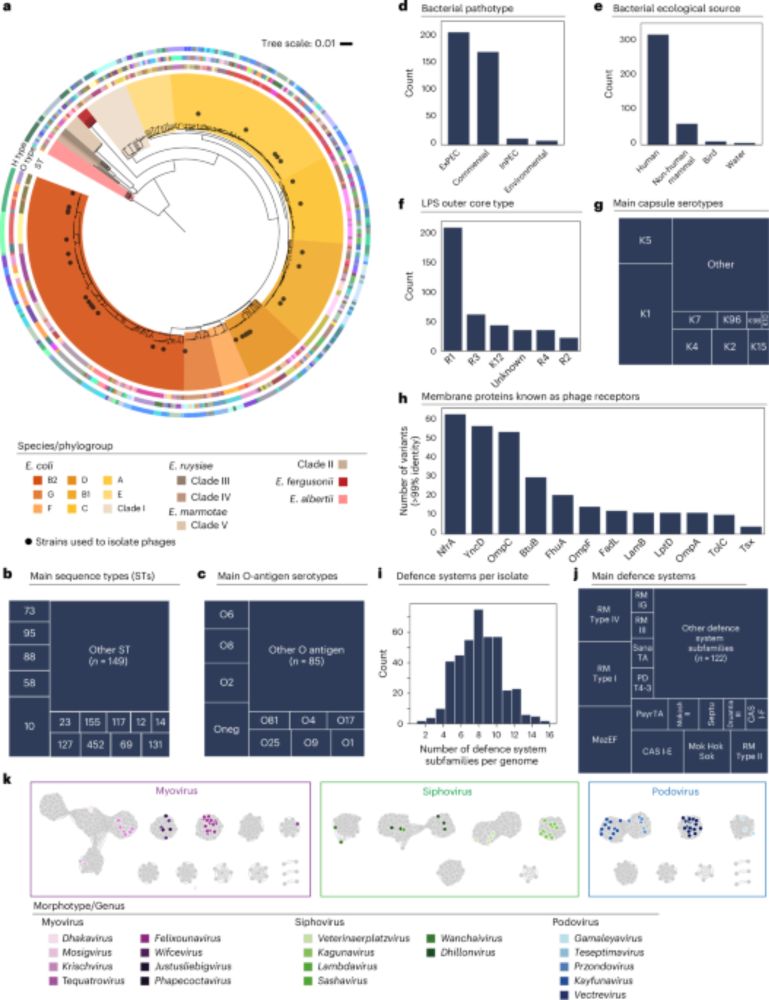Open postdoc position in in my lab in Berlin @mpiib-berlin.mpg.de.
Join us to push the frontier in ancient microbial genomics. Please apply until Oct 17th. Reach out in case you have any questions.
www.mpiib-berlin.mpg.de/2193291/job_...
15.09.2025 08:03 — 👍 22 🔁 28 💬 1 📌 0
We are looking for a postdoc to study single-cell transcriptional heterogeneity in the human skin microbiome.
We have a new protocol mostly developed, but need someone to see it through. Experience with protocol dev or RNAseq appreciated.
Funded by a new grant from MIT-HEALS.
12.09.2025 16:49 — 👍 78 🔁 61 💬 0 📌 0
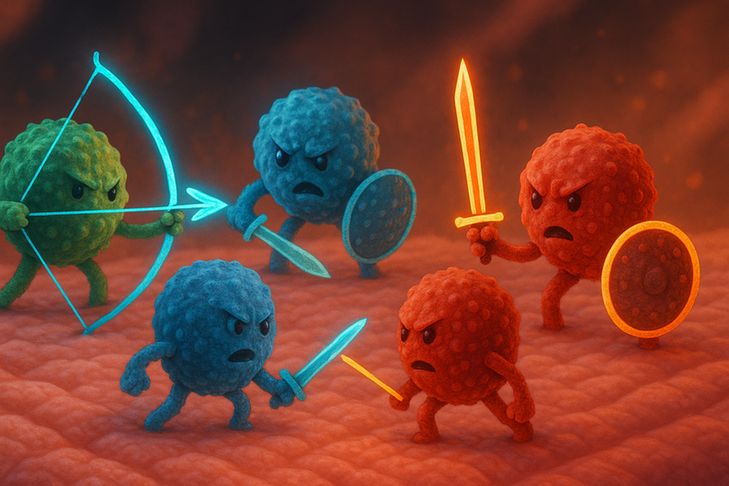
Image generated from ChatGPT.
A new study by @mancusosci.bsky.social and @contaminatedsci.bsky.social shows that intraspecies microbial conflict can block new strains from settling in. If we want long-lasting probiotics, we must account for battles within species, not just between them. www.nature.com/articles/s41...
02.07.2025 15:02 — 👍 2 🔁 2 💬 1 📌 0
Excited to see our work out in Nature Micro today! Big thanks to everyone involved in seeing it over the finish line!
30.06.2025 13:31 — 👍 8 🔁 3 💬 0 📌 0
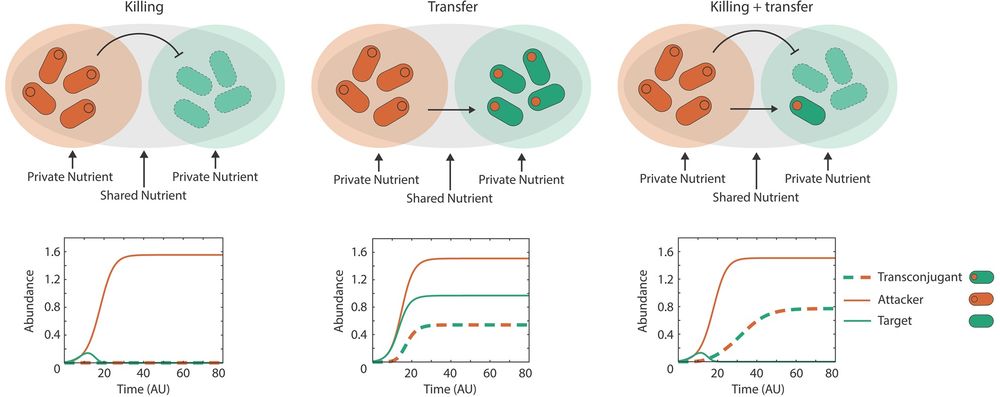
Modeling predicts that metabolic diversity increases the ecological impacts of weapon gene transfer. Modeling scenarios for each column are shown across the top row. Bottom row: Example dynamics of the strains (attacker, target, transconjugant) during a contest using parameters that correspond to the cross (X) shown in the parameter sweeps directly below.
#Bacteria use weapons to outcompete rivals, but what happens if they're transferred? @prokaryota.bsky.social @jdpal.bsky.social &co show that HGT of toxin #plasmids is rare but recipients can thrive under relaxed nutrient competition, reshaping bacterial warfare @plosbiology.org 🧪 plos.io/43vC3X7
22.05.2025 09:00 — 👍 58 🔁 27 💬 1 📌 1

Do people in the same household share strains when they have the same species?
How many cells transmit when a strain is shared?
Can strain composition be dynamic when species composition is stable?
We answer these and related questions for the facial skin microbiome in our latest paper.
🧵[1/10]
01.05.2025 18:41 — 👍 140 🔁 67 💬 4 📌 1
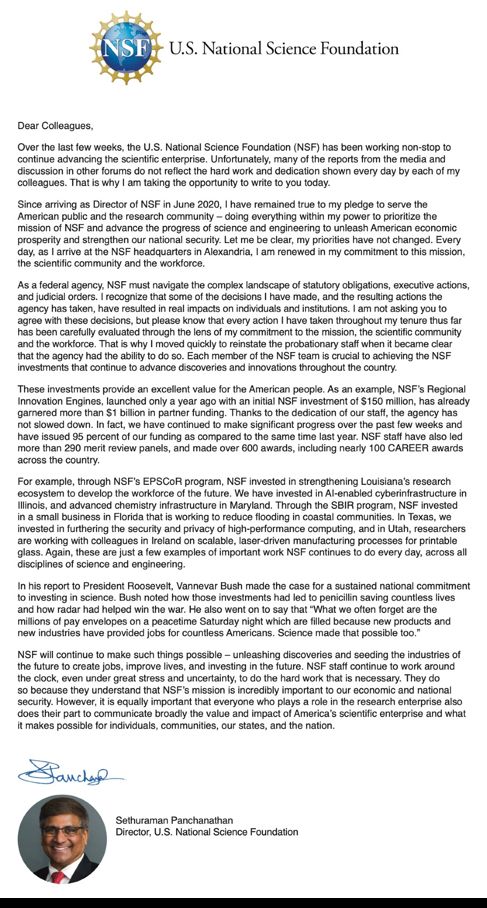
Long letter from NSF Director Sethuraman Panchanathan, available here: https://nsf-gov-resources.nsf.gov/files/Letter-to-the-Community.pdf
🧪 The NSF director is lying to you.
Let’s fact check 7 claims from yesterday’s letter to the community, while pointing out 3 critical omissions. 🧵
12.03.2025 12:51 — 👍 490 🔁 315 💬 11 📌 42
Edited for brevity: I expect the professional society that I have supported with national & regional membership dues, conference fees for myself and mentees, journal publication fees, & my time as an editor and reviewer, to support widely held values & to advocate on behalf of ALL microbiologists, 🧵
03.02.2025 11:40 — 👍 68 🔁 13 💬 1 📌 2
My letter to ASM leaders that I sent is too long to be posted here, so I'm going to post highlights in case anyone else needs information for their letter. 🧵
03.02.2025 11:36 — 👍 284 🔁 90 💬 10 📌 8
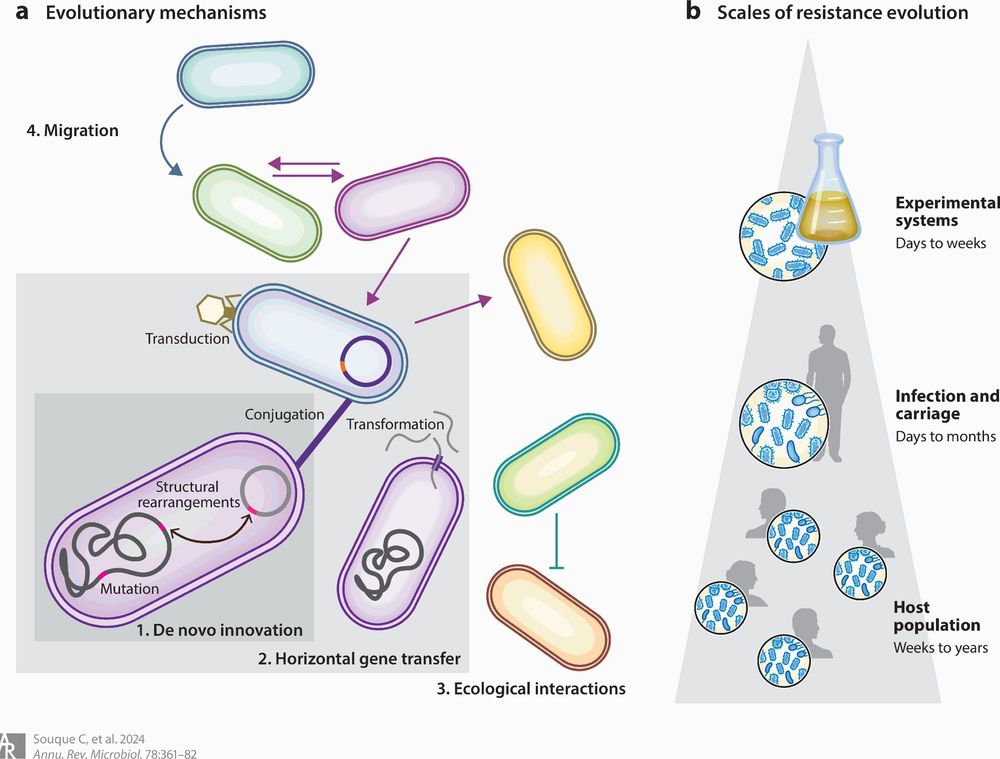
The first review article from my lab, helmed by @celiasouque.bsky.social, "From Petri Dishes to Patients to Populations: Scales and Evolutionary Mechanisms Driving Antibiotic Resistance" is now online and open access at Annual Reviews Microbiology:
www.annualreviews.org/content/jour...
21.11.2024 15:27 — 👍 296 🔁 112 💬 11 📌 5
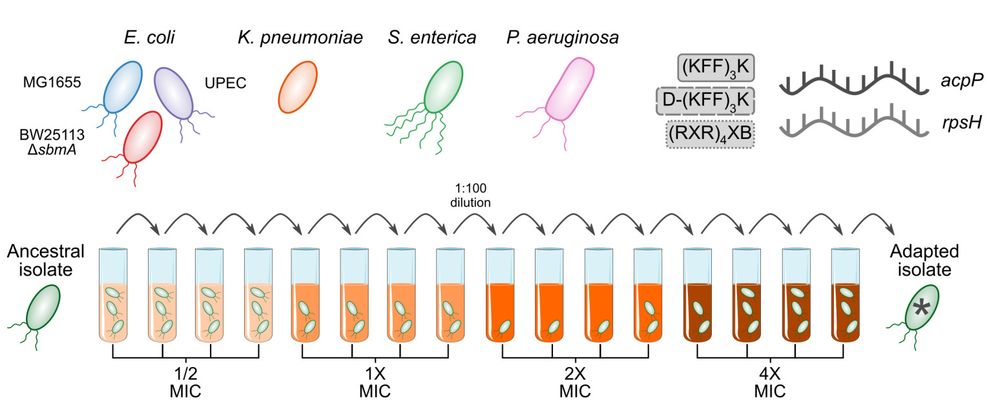
Panel A from figure 1 of the preprint showing the strains and asobiotics used, as well as the in-vitro laboratory evolution assay
We used in-vitro laboratory evolution to "stress test" the next generation class of antibiotics based on antisense oligos ("asobiotics"). Head over to our new preprint to find out more!
www.biorxiv.org/content/10.1...
30.10.2024 16:33 — 👍 7 🔁 5 💬 2 📌 2
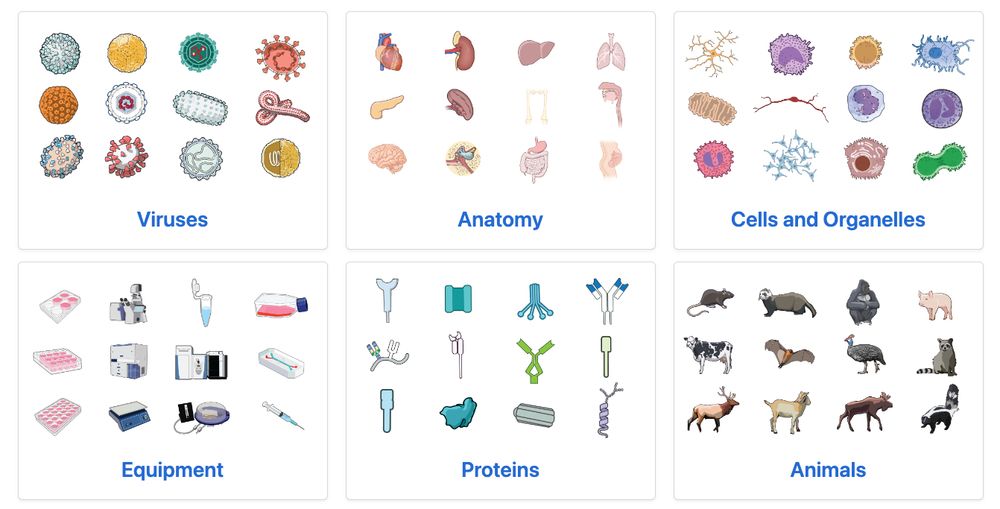
Want to make beautiful scientific figures? Easy!
The NIH released a library of 2000+ free scientific illustrations called *BioArt*.
Check it out! bioart.niaid.nih.gov
#AcademicSky #PsychSciSky 🧠🟦 🧪
30.10.2024 09:45 — 👍 565 🔁 260 💬 28 📌 18
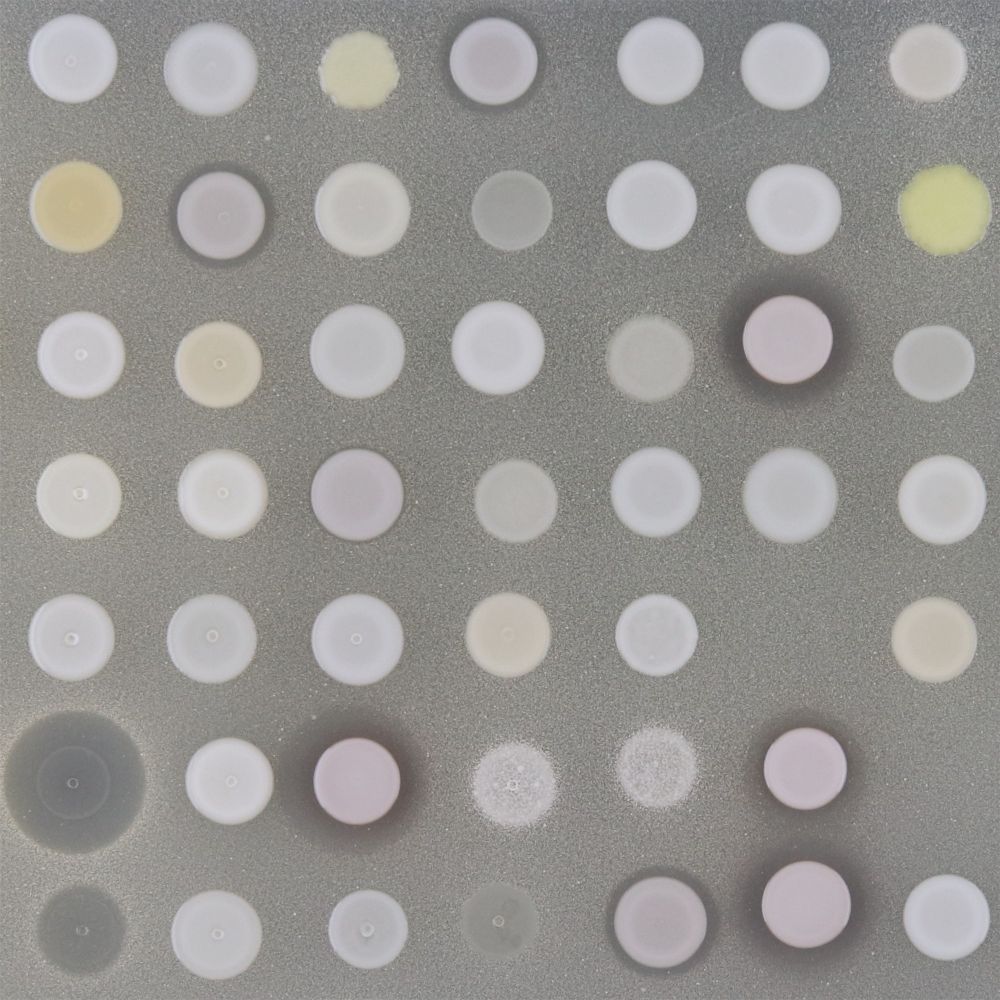
Petri plate photo which shows an array of bacteria inhibiting eachother's growth
Given the recent X-odus, I'll reintroduce my postdoc research:
Commensal skin bacteria not only attack pathogens, but also fight among themselves! This intraspecies (& interspecies) warfare not only limits which strains can coexist on each person, it also makes cool-looking petri dishes 😎
21.10.2024 21:04 — 👍 34 🔁 9 💬 1 📌 1
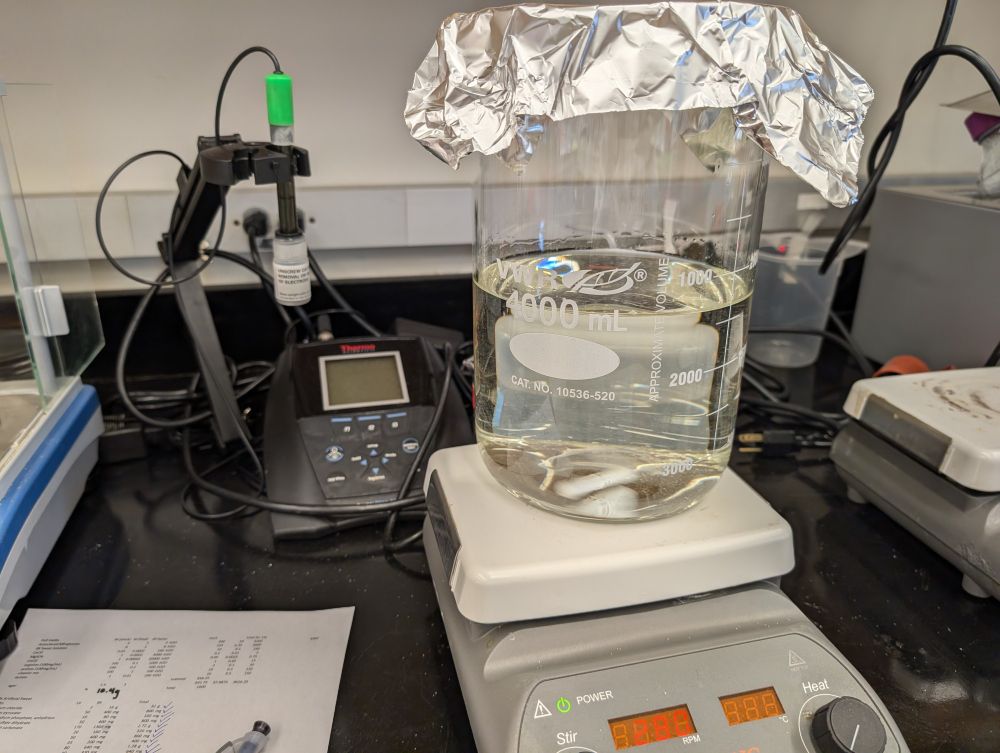
2 liters of sweat solution in a large beaker in a laboratory.
Being a postdoc is strange. One day you're writing a faculty applications highlighting your unique and valuable skillset, the next you're making 2L of 8x concentrated artificial sweat...
24.09.2024 17:04 — 👍 15 🔁 1 💬 1 📌 0
We are on the look out for postdocs to join the Lieberman Lab at MIT. Areas include:
-Connecting bacterial warfare to strain dynamics in vivo
-Evolution and transmission of microbes in humans
-Revisiting role of microbes in acne vulgaris
Take a look at our recent preprints and reach out!
11.07.2024 13:00 — 👍 54 🔁 39 💬 0 📌 2
Those of you at SMBE, check out Poster #86 on Tuesday by grad student Evan Qu: "Phylogeny-aware strain profiling limits false positive detections and quantifies divergence time of novel strains"
07.07.2024 21:41 — 👍 6 🔁 5 💬 0 📌 0
Lots of amazing EEB sessions at #ASMicrobe, but consider stopping by B312 at 315 to see how ecoevo dynamics and antagonism play out for S epi living on people!
16.06.2024 17:43 — 👍 5 🔁 1 💬 0 📌 0
Chris Mancuso @mancusosci.bsky.social will be sharing our story in bacterial antagonisms on Sunday at 3:15p in the session on Integrating in silico models in host-microbe biology.
Check it out for more antagonism goodness ! #ASMicrobe
14.06.2024 18:52 — 👍 4 🔁 3 💬 0 📌 0
This is amazing! I was just brainstorming with a labmate about modeling hgt-environment-antagonism tradeoffs, so glad you tackled it already! Really curious whether your results can help resolve debate re:similarities/differences between host associated bugs (Staphs) and environmental bugs (Vibrios)
09.05.2024 22:28 — 👍 1 🔁 0 💬 1 📌 0
Thanks for the link, sorry I missed this one! Nice evidence pointing to anti-aureus activity. Love that you examined ZOI size rather than just binary data, feel like these types of data are often underutilized!
08.05.2024 17:25 — 👍 3 🔁 0 💬 1 📌 0
In addition to Jacob, I want to thank Evan Qu, Delphine Tripp, and Ishaq Balogun for all their help on this project. And of course Tami Lieberman (@contaminatedsci.bsky.social) for guiding us all along the way! 12/12
08.05.2024 14:19 — 👍 0 🔁 0 💬 0 📌 0
HHMI Hanna Gray Fellow at the Cleveland Clinic studying drug resistance evolution w/ Jacob Scott 💊 | HHMI Gilliam Fellow & Ph.D. w/ Richard Lenski | #DisabledInSTEM 🦾 | He/Him
Research Fellow at Northumbria University: phage, synthetic biology, sialic acid, transport proteins. He/him.
Staph aureus evolution + genomics | PhD candidate @ Emory University | Population Biology, Ecology, & Evolution | 🧬💻🦠🍄 | Mastodon 🦣 @meganphillips@mstdn.science | https://orcid.org/0000-0002-0781-3325
Latest news and research from MIT's Department of Civil and Environmental Engineering
HFSP Postdoctoral Fellow at MIT | Mobile genetic elements and microbial communities
postdoc with @baym.lol at Harvard Medical School | UIUC, UMass Amherst alum
Algae enthusiast, Associate Professor @UniofExeter, joint appointment @thembauk
Algal ecophysiology | signalling | microbiome | molecular microbiology | diatoms!
A natural product chemist using mass spec to discover chemical diversities in nature.
Working at Sookmyung Women's University, Seoul, Korea as an associate professor.
University of Pittsburgh School of Medicine | PhD Graduate Student | All Things Phage-Host Interactions & Antibiotic Resistance 🧫🔬
Studying metabolic evolution, microbial macroevolution, biospheric self-organization, and the feedbacks between Earth and life. Dad, Husband, Scientist.
https://rogierbraakman.com/
Group leader at Peter Mac & the Doherty Institute in Melbourne, Australia
microbial genomics, statistics, machine learning
PhD student with the Westra/van Houte Lab @UniExeCornwall. Researching how phage talk to each other whilst being mediocre at best at communicating myself 🦠
University of Pittsburgh PhD student in the Van Tyne Lab 🦠 Focused on the evolution and transmission of healthcare associated bugs 🧬💻🕵🏼♀️
Microbiology, evolution, and bacteriophages. University of Pittsburgh School of Medicine.
Physicist Turned Psychologist | Senior Researcher in #STEMed | Meta-Analysis Nerd | https://d-miller.github.io/
Also posts about 🧪 science funding to focus my attention.
Personal account. I don’t speak for my employer or any other orgs.
UW-Madison Microbiology PhD student in the @molabuw.bsky.social, studying phage infection in microbial communities. Microbial ecology & evolution. Fan of birds, books, bacteriophages, and Beckett.
|PhD | Gut Microbiome in health and diseases | Irritable Bowel Syndrome(IBS)| Bioinformatics and Data Analysis | Metagenomics and Multi-omics| Gut-brain-axis disorders| Probiotics | Single-cell gut Eukaryotes - Blastocystis|.
Bacterial Immunity and Synthetic Biology enthusiast. Head of Lab at Institut Pasteur. Co-Founder of Eligo Bioscience.
Bioinformatician at the Centre for Pathogen Genomics at the University of Melbourne




